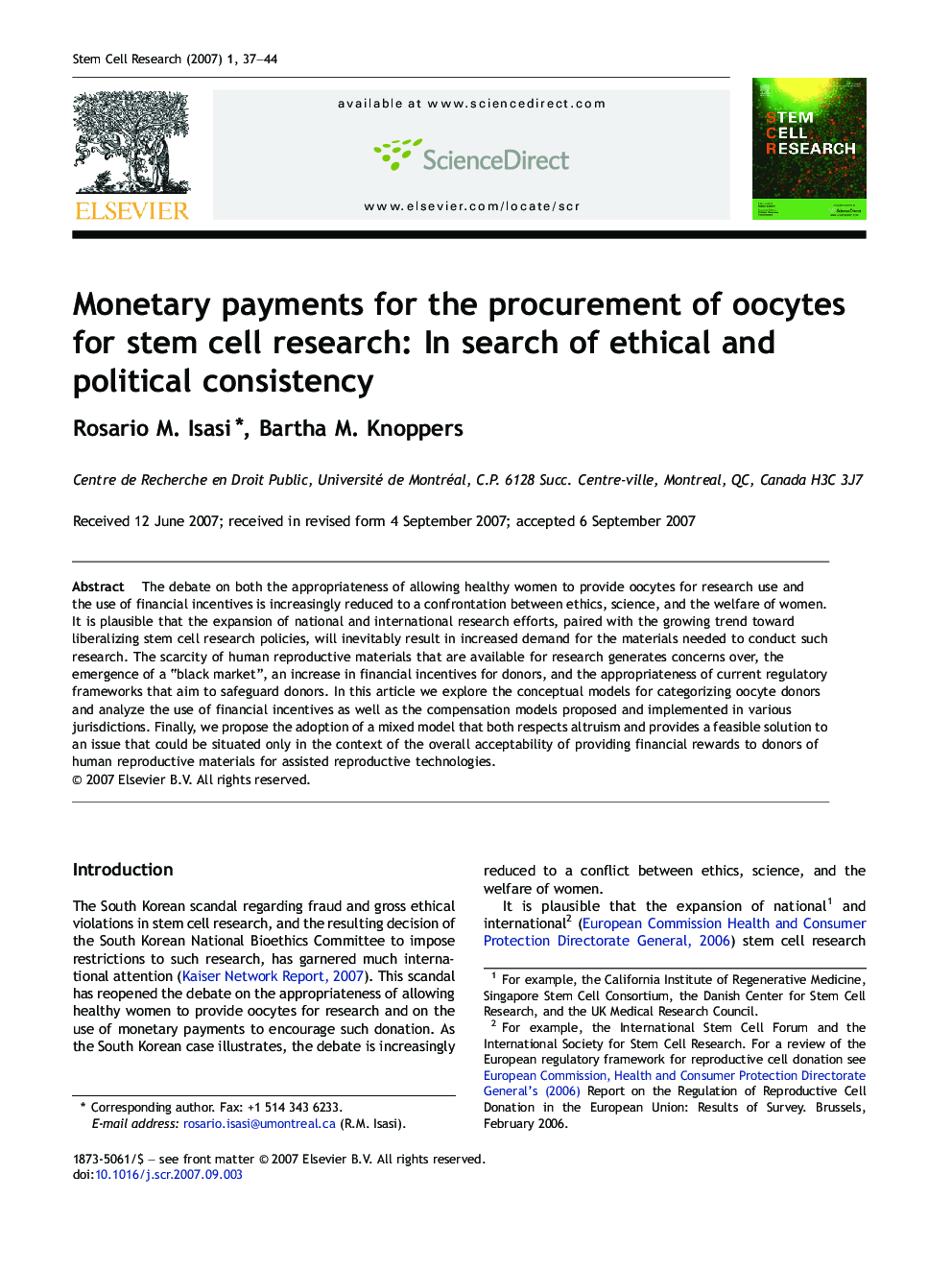| Article ID | Journal | Published Year | Pages | File Type |
|---|---|---|---|---|
| 2094457 | Stem Cell Research | 2007 | 8 Pages |
The debate on both the appropriateness of allowing healthy women to provide oocytes for research use and the use of financial incentives is increasingly reduced to a confrontation between ethics, science, and the welfare of women. It is plausible that the expansion of national and international research efforts, paired with the growing trend toward liberalizing stem cell research policies, will inevitably result in increased demand for the materials needed to conduct such research. The scarcity of human reproductive materials that are available for research generates concerns over, the emergence of a “black market”, an increase in financial incentives for donors, and the appropriateness of current regulatory frameworks that aim to safeguard donors. In this article we explore the conceptual models for categorizing oocyte donors and analyze the use of financial incentives as well as the compensation models proposed and implemented in various jurisdictions. Finally, we propose the adoption of a mixed model that both respects altruism and provides a feasible solution to an issue that could be situated only in the context of the overall acceptability of providing financial rewards to donors of human reproductive materials for assisted reproductive technologies.
